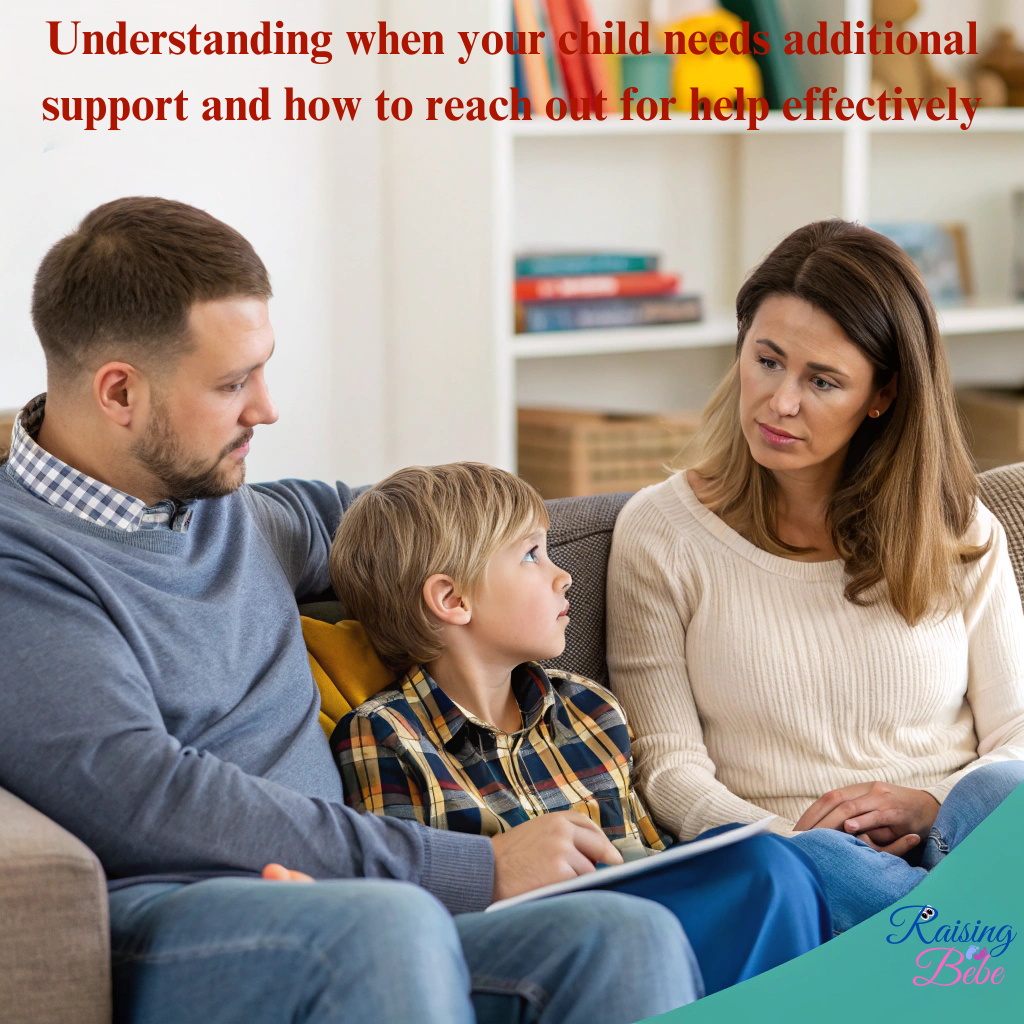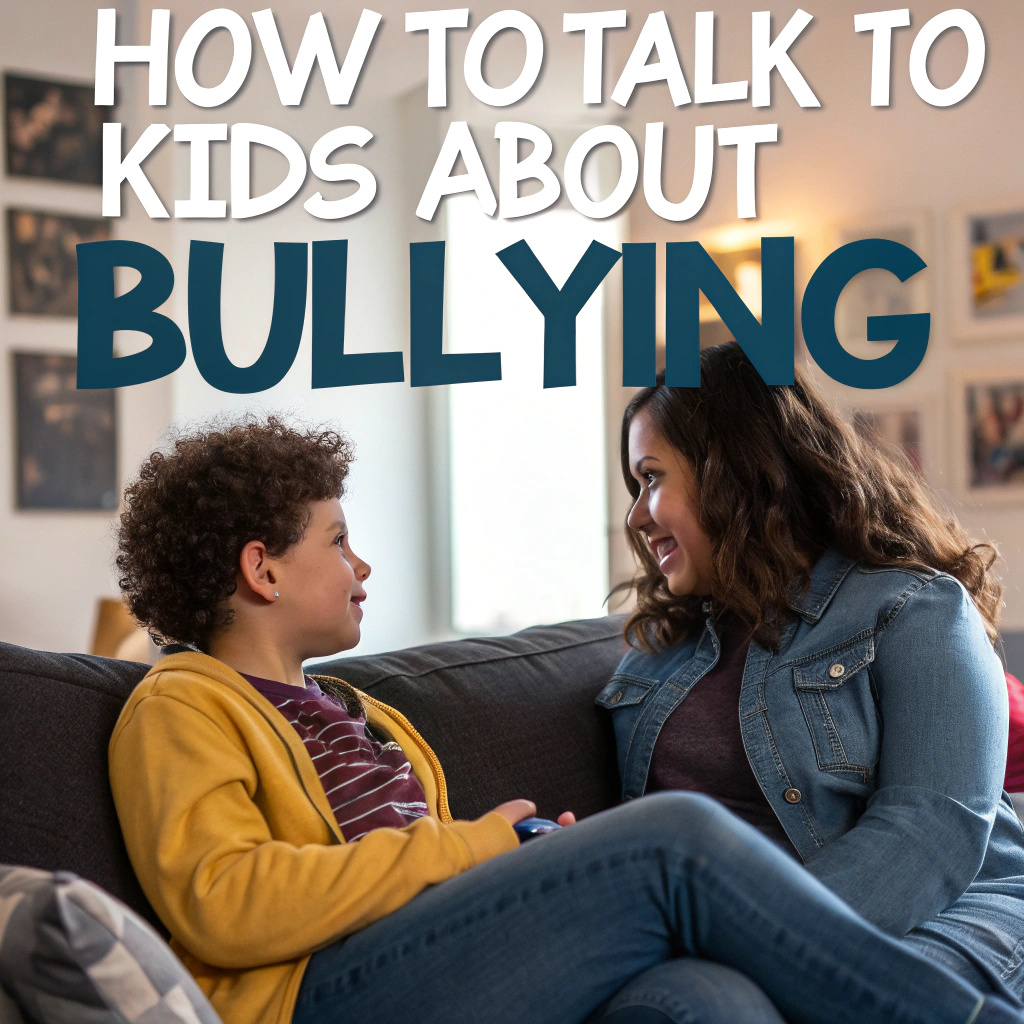Talking to kids about bullying is one of the most important conversations you can have as a parent. By discussing bullying early, you help your child understand the behaviors associated with bullying and how they can respond when faced with such situations. Whether it’s happening at school or online, knowing how to talk to kids about bullying sets the foundation for trust and open communication. This guide will provide you with the tools and strategies to approach this sensitive topic with care, empowering your child to stand up for themselves and seek help when necessary.
1. Why It’s Important to Talk to Kids About Bullying
Exploring the impact of bullying and the need to talk to kids about bullying early
Bullying can have serious and long-lasting effects on a child’s emotional, social, and psychological development. Beyond the immediate physical harm, bullying can lead to feelings of loneliness, depression, and anxiety. Children who are bullied may also have trouble concentrating in school or have lower self-esteem. Therefore, it’s vital to address bullying before it becomes a significant issue in your child’s life.
By talking to your child early, you can help them understand what bullying is, why it’s hurtful, and how to identify it when they see or experience it. It also opens the door for ongoing communication, so your child feels comfortable sharing their experiences with you as they encounter challenges.
- Bullying can be direct or subtle: While physical bullying (like hitting or pushing) is easier to recognize, emotional or psychological bullying (like spreading rumors, exclusion, or name-calling) can be more difficult to identify.
- Cyberbullying is real: Online bullying, or cyberbullying, can happen through social media, texting, or other digital platforms. Discussing digital safety and respectful online behavior is just as important as talking about in-person bullying.
2. How to Approach the Conversation: Starting the Discussion About Bullying

Tips on how to ease into the topic and make it a safe space for your child to share
Initiating a conversation about bullying can be intimidating, but it’s crucial to approach it with sensitivity. The goal is to make your child feel safe and supported while discussing something that can be uncomfortable for them. Here are some tips to make the conversation flow smoothly:
- Choose a relaxed environment: Find a quiet, comfortable place where you and your child can talk without distractions. This can be during a car ride, while making dinner, or even sitting together after school. The key is to create a calm and inviting space.
- Ask open-ended questions: Rather than asking yes or no questions, prompt your child with open-ended ones. For example:
- “What do you think bullying looks like?”
- “Have you ever seen someone being bullied at school?”
- “How does it make you feel when you see or hear someone being mean to others?”
- Use age-appropriate language: Keep the conversation appropriate for your child’s age and maturity level. Younger children may benefit from simple definitions, while older kids might be ready for more in-depth discussions about power dynamics, empathy, and respect.
- Normalize the conversation: Let your child know that bullying is a topic that’s important to talk about and that it’s okay to have strong feelings about it. You might say, “It’s really important to me that we talk about things like bullying, and I want you to feel comfortable telling me if something’s happening that’s making you feel bad.”
- Share your own experiences: If appropriate, share a story about when you were bullied or when you witnessed bullying. This can help your child feel less isolated and understand that it’s a problem others face too.
3. Teaching Kids How to Respond to Bullying: Talking About Actions
Practical strategies to help kids handle bullying situations confidently
Once your child understands what bullying is, it’s time to give them the tools they need to respond effectively. Children need to feel empowered to stand up for themselves, while also knowing when to seek help. Here are key strategies to teach your child:
- Stay calm and walk away: Teach your child how to remain calm when faced with bullying. Encourage them to walk away from the situation if possible. Reacting impulsively with anger or aggression may only escalate the bullying.
- Role-playing: Practice different scenarios with your child where they can practice walking away or saying “Stop, I don’t like that” assertively. Role-playing gives your child the confidence to act in real-life situations.
- Stand up assertively (not aggressively): Assertiveness is key when dealing with bullies. Teach your child to speak firmly and confidently without resorting to aggression. Phrases like “Please stop” or “That’s not okay” can be empowering and help set boundaries.
- Find a trusted adult: Let your child know that it’s important to talk to an adult if they experience bullying or witness someone else being bullied. Help them identify trustworthy adults at school, like teachers, school counselors, or even a coach. If your child feels safe reporting bullying, they are more likely to speak up when needed.
- Use empathy to stop bullying: Encourage your child to stand up for others if they witness bullying. Teaching them how to be an “upstander” (someone who intervenes when others are being hurt) builds a culture of kindness and respect.
- Encourage a buddy system: If your child feels unsafe, encourage them to walk with friends or classmates to avoid being targeted. Bullies are less likely to target groups than individuals.
4. When to Seek Help: Recognizing Signs and Getting Support

Understanding when your child needs additional support and how to reach out for help effectively
Sometimes, bullying can be difficult to detect, especially when it’s subtle or emotional. As a parent, it’s important to be vigilant and recognize changes in your child’s behavior. Some warning signs that your child may be dealing with bullying include:
- Behavioral changes: If your child starts withdrawing, avoiding school, or shows sudden mood swings, they may be struggling with bullying. Other signs may include anxiety, depression, or irritability.
- Physical signs: If your child has unexplained bruises, torn clothing, or damaged personal items, these may indicate that they’re being physically bullied.
- School avoidance: If your child suddenly refuses to go to school or seems fearful about certain activities (like gym class or lunch), this may be a sign that bullying is happening at school.
- Lower academic performance: If your child’s grades start to slip, or they show a lack of interest in school, bullying might be affecting their focus and confidence.
If you suspect bullying, it’s essential to act swiftly:
- Talk to school officials: Set up a meeting with your child’s teacher, principal, or counselor. Share your concerns and ask for their help in addressing the issue.
- Get external help: If bullying continues or is particularly severe, consider seeking support from a therapist or counselor to help your child cope with the emotional toll.
- Use community resources: Many communities have anti-bullying organizations or hotlines that can offer additional support.
The key is to ensure your child knows they’re not alone and that you’re there to help them every step of the way.
Final Thoughts
Talking to kids about bullying is an ongoing process that helps them understand, recognize, and respond to bullying behavior with confidence. By approaching the topic with sensitivity, providing them with strategies to handle bullying, and ensuring that they know when to seek help, you are empowering them to create a safer and more supportive environment for themselves and others. Remember, the more you talk to kids about bullying, the stronger their ability to handle it will be.

